Gary Cole, longtime director of photography for Playboy magazine, has a message for you.
Three Rules From Gary Cole
 Quality – If you want to play in the big leagues, you must set very high standards for your photography. The digital age has made it relatively simple to be a reasonably competent photographer. After all, the cameras and post-production tools do so much of the work that photographers once had to do for themselves. However, you can’t be satisfied with “competent.” You must raise your level of expertise so that you separate yourself from the field, so that your work stands out from so much that is floating around in the marketplace. In order to achieve the highest level of quality, you need to study your craft, experiment with lighting techniques, determine what your core strengths are as a photographer and then work diligently at your craft. You must be your own toughest critic. Don’t be satisfied with anything less than perfection.
Quality – If you want to play in the big leagues, you must set very high standards for your photography. The digital age has made it relatively simple to be a reasonably competent photographer. After all, the cameras and post-production tools do so much of the work that photographers once had to do for themselves. However, you can’t be satisfied with “competent.” You must raise your level of expertise so that you separate yourself from the field, so that your work stands out from so much that is floating around in the marketplace. In order to achieve the highest level of quality, you need to study your craft, experiment with lighting techniques, determine what your core strengths are as a photographer and then work diligently at your craft. You must be your own toughest critic. Don’t be satisfied with anything less than perfection.
 Getting Published – If you want to sell your images to a client, to get published, the first thing you need to do is determine what your prospective client (whether it is an ad agency, a magazine, an online entity, whatever) is looking for. I really can’t emphasize this enough. So many times over my many years at Playboy, I received submissions from well-meaning photographers that had little or no relevance to what Playboy publishes. Dramatic black and white photos of homeless people or colorful landscapes from a trip to Spain don’t address the editorial categories of Playboy Magazine or the interests of its readers. So give some serious thought to whom you are submitting images to and tailor your presentation to them.
Getting Published – If you want to sell your images to a client, to get published, the first thing you need to do is determine what your prospective client (whether it is an ad agency, a magazine, an online entity, whatever) is looking for. I really can’t emphasize this enough. So many times over my many years at Playboy, I received submissions from well-meaning photographers that had little or no relevance to what Playboy publishes. Dramatic black and white photos of homeless people or colorful landscapes from a trip to Spain don’t address the editorial categories of Playboy Magazine or the interests of its readers. So give some serious thought to whom you are submitting images to and tailor your presentation to them.
 Rights and Releases – Don’t be sloppy about rights and releases and make sure you document all the expenses that go into your shooting. You should have a solid basic model release that you have models sign before you begin shooting. If there is remuneration involved, it’s a good idea to have the back of the check reference the release. Make certain your releases are dated. You should also have a location release handy in case it’s needed. And keep track of your expenses with receipts for every expense for which you expect to be reimbursed. Whoever you are shooting for is going to need those receipts for their tax purposes. If you have anyone working with you during the shooting, for example, an assistant working with you on a computer during the shooting or anyone doing post production work for you, you should have a signed agreement from them stating that you are the sole owner of the work and that all rights reside with you in perpetuity.
Rights and Releases – Don’t be sloppy about rights and releases and make sure you document all the expenses that go into your shooting. You should have a solid basic model release that you have models sign before you begin shooting. If there is remuneration involved, it’s a good idea to have the back of the check reference the release. Make certain your releases are dated. You should also have a location release handy in case it’s needed. And keep track of your expenses with receipts for every expense for which you expect to be reimbursed. Whoever you are shooting for is going to need those receipts for their tax purposes. If you have anyone working with you during the shooting, for example, an assistant working with you on a computer during the shooting or anyone doing post production work for you, you should have a signed agreement from them stating that you are the sole owner of the work and that all rights reside with you in perpetuity.
“Come see me at the next Shoot The Centerfold seminar for more business details.”
Gary Cole on Lighting
In case you need to be reminded, light is the essence, the essential element in photography. While God certainly wasn’t foreshadowing the invention of photography when he exclaimed, “Let there be light” in Genesis 1:3, we understand light is as essential to photography as it is to life. To successfully capture light first on silvered copper plates, then on film, now on image sensor chips has remained the challenge facing every photographer, amateur or professional, since Louis Daguerre first decided he wanted to photograph his girlfriend.
 In the beginning and until this day, the best source of light is the original source of light: the sun. However, that doesn’t mean the more sun, the better. Harsh light is just that—harsh. It brings out the worst in your subject. The answer is simple, although sometimes painful. Get up early or, second best, wait for the sun to journey towards day’s end. Early light is soft light. It has a soft warmth, a glow that’s lacking even at sunset. It creates shadow but to an extent fills shadow at the same time.
In the beginning and until this day, the best source of light is the original source of light: the sun. However, that doesn’t mean the more sun, the better. Harsh light is just that—harsh. It brings out the worst in your subject. The answer is simple, although sometimes painful. Get up early or, second best, wait for the sun to journey towards day’s end. Early light is soft light. It has a soft warmth, a glow that’s lacking even at sunset. It creates shadow but to an extent fills shadow at the same time.
Sunsets are beautiful to watch but less useful to the glamour photographer. Unless scrimmed by soft clouds, evening sun turns flesh orange and even an angry red. And there is always the temptation to shoot the light instead of the model. The strong backlight of the sun may look spectacular to the eye and even great in the viewfinder or on the computer screen, but it is an unwelcome challenge to transfer to ink on paper. In my many years at Playboy overseeing the print proofing process, we seldom were able to successfully reproduce a strongly backlit image
My advice: make your preparations for a daylight shoot, check the weather report and set your alarm early. Encourage your model and crew to get a good night’s sleep and be ready to shoot at first light. I know it sounds simplistic, even corny. However, I guarantee your best daylight photos will be taken before 9 am. Of course, you can do what Ansel Adams and the best nature and wildlife photographers since have done and that’s wait for the best light. It might be today. Or next week. Or three weeks from now. Unfortunately, your model is likely to get more than a little antsy.
Whatever time of day you attempt your daylight photography, be prepared to fill the shadows. Deep shadows were wonderful in the film “Citizen Kane” but then Orson Welles wasn’t trying to make Charles Foster Kane look beautiful. Shadows bring drama to an image. However, uncontrolled shadows can make a pretty girl ordinary and an ordinary girl ugly. (I can use the word “ugly,” can’t I? We’re glamour professionals here.) Deep, unfilled shadows make noses bigger, longer; eyes tired and dim; complexions craggy. Brown or black hair becomes a clump of darkness without detail.
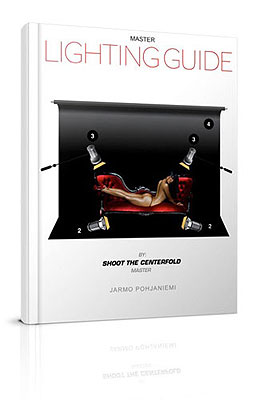 The author of this lighting guide, my good friend Jarmo Pohjaniemi, Jarmo, is always searching for the best ways to control and fill shadows. On my recent trip to Miami, I learned he had discovered the use of sheets of white fiberglass in a variety of sizes as useful to reflect fill light. He fashioned rudimentary frames for them and had them at the ready when needed. The texture of the fiberglass reflects light back in a thousand different angles, a little like George H.W. Bush’s thousand points of light inaugural injunction some years back. If fiberglass doesn’t appeal to you, a white or crème piece of poster board is better than nothing. And it also helps you if have an assistant or helpmate to sensitively hold and aim the reflected light where needed
The author of this lighting guide, my good friend Jarmo Pohjaniemi, Jarmo, is always searching for the best ways to control and fill shadows. On my recent trip to Miami, I learned he had discovered the use of sheets of white fiberglass in a variety of sizes as useful to reflect fill light. He fashioned rudimentary frames for them and had them at the ready when needed. The texture of the fiberglass reflects light back in a thousand different angles, a little like George H.W. Bush’s thousand points of light inaugural injunction some years back. If fiberglass doesn’t appeal to you, a white or crème piece of poster board is better than nothing. And it also helps you if have an assistant or helpmate to sensitively hold and aim the reflected light where needed
Forgive me if I’m telling you something you already well know. However, it’s never a bad idea to go back to the basics, to experiment with the simplest kinds of light and reflection. Good photographers become better photographers by experimentation and invention. If you’re not trying new things, it’s unlikely you’ll improve your skills.
However, we don’t always want to shoot in daylight. We want to create other situations whether on seamless, in a set or on a location. And we know that Jarmo and a couple of generations of Playboy photographers have developed the art of lighting into exactly that: an art. I won’t attempt to describe the myriad situations and lighting solutions that Jarmo’s lighting guide encompasses. It is a college course, no, a graduate course in the skill of using light.
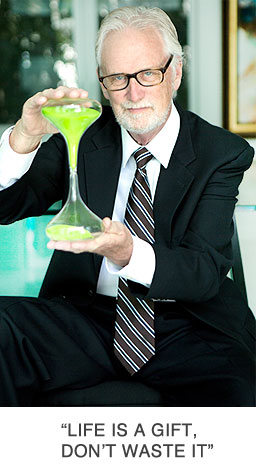 Whether you have the most modest equipment or have invested in more and sophisticated lighting equipment, Jarmo’s lighting guide is an invaluable wealth of practical information on how to light your model, your sets, your locations. I know of no photographer who works more diligently at his craft than Jarmo, who thinks about how to solve lighting challenges in a variety of ways, from simple to complicated. The diagrams and descriptions are easy to comprehend and put into practice. The knowledge imparted, created by Jarmo after years of perfecting his lighting techniques, is a short cut to understanding and using lighting effectively. There’s no question following the guidance offered will make you a better photographer.
Whether you have the most modest equipment or have invested in more and sophisticated lighting equipment, Jarmo’s lighting guide is an invaluable wealth of practical information on how to light your model, your sets, your locations. I know of no photographer who works more diligently at his craft than Jarmo, who thinks about how to solve lighting challenges in a variety of ways, from simple to complicated. The diagrams and descriptions are easy to comprehend and put into practice. The knowledge imparted, created by Jarmo after years of perfecting his lighting techniques, is a short cut to understanding and using lighting effectively. There’s no question following the guidance offered will make you a better photographer.
The frustrated English major in me is unable to avoid a final literary allusion, this one from Mary Shelley’s “Frankenstein.” It may have concerned “the monster” but also can be applied to the art and craft of photography as she encourages us to “…pour a torrent of light into our dark world” and, if I may add, create some beautiful photographs.
Gary Cole





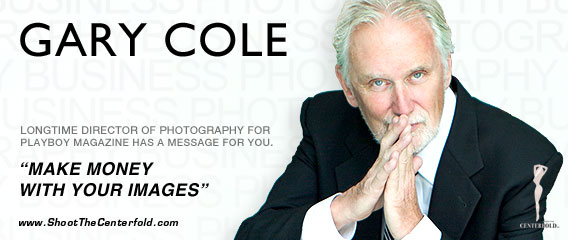
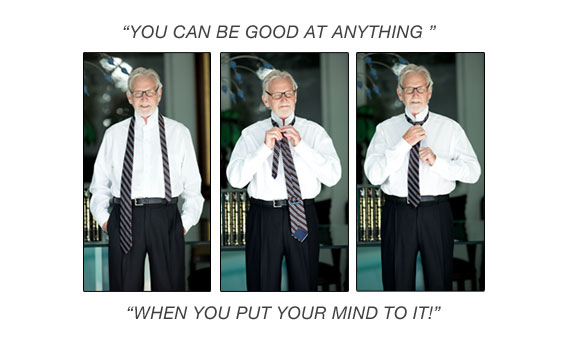
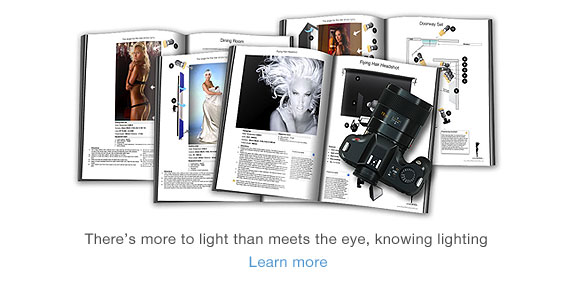














Gary, Sorry you could not able to attend STC Miami. I enjoy your concise descriptions related to the craft of photography and look forward to following you more.
Gary:
I found myself thinking about you and our old college pal Fred Stephen. Could not find Fred. I had the impression he had become a professor but had no luck. I found you easily. As it happens I met, rather late in life, after one failure, a beautiful woman who used to work at playboy as an executive assistant under her maiden name, Eileen Donnelly, and we married and were fortunate to have three wonderful children, despite starting late, a daughter and then two twin boys, one of whom is dabbling in film production. Our daughter is a bit of a superstar and travels all over the world in the interest of restoring the economies of war torn and strife torn nations. I don’t know if Eileen ever met you but she has spoken of being at parties at the Playboy mansion. She has mentioned that Hugh Hefner’s daughter seemed to be the brains of the operation when she worked there. Congratulations on what has been, obviously, a stellar career. No need to respond. I am just glad that you have had such a remarkable career. P.S. I note that you, like myself these days, have a shock of white hair. It seems to be shedding and I keep telling Eileen she must not be putting the dynovite in my food.
Best regards,
Larry
Larry,
Very nice to receive a message from you. Even though I seem to have lost touch with Fred, I still hold him in my heart as one of my very best friends in life. I know he has devoted most of his life to social work and has run some agencies both in New York and, more recently, Chicago. I know that he and Ann divorced long ago and I don’t think he ever remarried. And I know that both his mother and father passed away a number of years ago. I wish I knew where he was and you have provoked me in an attempt to find him. As we know, Fred was one of the smartest people one is likely to encounter in this life. I don’t remember Eileen but then I don’t remember lots from my early Playboy days. I have plenty of white hair if you need some. Best regards to you and your family. If we find Fred, we ought to have a beer together. gary
Gary will be out in LA and would love to see you…my kids are grown son is a Dr. And my daughter does makeup and going to school getting her doctrine in Speech Pathology.